Ulteo Opensource Virtual Desktop
Ulteo is an open source program that does the same thing as Citrx. Ulteo Open Virtual Desktop v2.0 provides an open architecture to deliver securely any Linux and Windows applications to any device of the enterprise through the web browser, from anywhere. Integration in a Microsoft environment is fully supported. This is a pretty cool program and I use it to make a standard desktop interface that I can access from several different machines and have all of the data, and changes I have done on other computers. I have set this program up and I like it, I don’t have the need to do large scale production environments with Ulteo. However it is cool to set up you virtual desktop and be able to log on to it to make changes to work or other projects and have the ability to access it in the same format from any computer on the internet. I am not sure of any kind of security problems that may exist but I would recommend checking it out.
Ulteo OVD allows Linux applications to be run on a Windows machine through a web browser along with Windows apps. The Linux applications are simply installed on the Linux server and you can publish it for use on the virtual desktop. The Windows applications require a Windows terminal server. I set it up and got everything working great, however you run into the licensing that is required for terminal connections so I didn’t do any thing past the eval period. According to their web site future versions will not require a terminal server. You just install the Ulteo agent and register the Windows server with the session manager portion of the Ulteo software and publish the applications to the applications manager.
The Linux portion of the software has two sections, the session manager and the application manager. The session manager controls the admin interface and the connections to the servers. The servers have the applications in stalled on them and from what I can figure they tie in with the application manager to allow access to multiple instances of the same application on different virtual desktops. I’m not sure how all of it goes together this is just how I figure it works. The session and applications managers can be installed on the same machine but in a production environment it is recommended that they are separate machines.
Authentication can be handled several ways. The first it to use local accounts created in Ulteo and use them to log in to the OVD. Active directory and LDAP can also be used for user accounts and authentication. The configuration of Ulteo to use AD is pretty simple and I had it working without much trouble. The client machines will need to have java installed to make remote connections work. You can launch OVD two ways, it can be a portal or a desktop. The portal is a smaller more compact instance that still allows access to the applications and files, just with less visual features. The desktop looks a lot like an XP desktop with icons on the screen and some coloring changes. The menu is simple the applications that can be launched in the desktop. The following is some specs for the program.
Program requirements:
System recommendation
- Servers for OVD Application servers): x86 servers w/ dualcore or quad CPU. 1GB or more RAM per 15 concurrent end-users. Supported Host OS: Ubuntu 8.04.*, RHEL 5.2, 5.3, Centos 5.2+, Fedora 10, OpenSuSE 11, generic Linux install.
- Servers for Windows applications: Windows 2003 or 2008 Server+Terminal Services, any hardware.
- Servers for OVD Session Manager: any Pentium class x86 server w/512MB or more RAM. Host OS: Ubuntu 8.04.*, RHEL 5.2, 5.3, Centos 5.2+, Fedora 10, OpenSuSE 11, generic Linux install.
- Client: Sun Java 1.5/1.6 enabled browser: Firefox 2+, Internet Explorer 6+, any plateform. Safari on MacOS. Adobe Flash plugin is needed for the filemanager in web portal mode.
- Network: 100Mbps or more LAN
- User directory servers: Active Directory on Windows Server and LDAP server are currently supported.
- Fileservers: CIFS (Linux and/or Windows), embedded WebDAV server
Key benefits for IT
- Ease of use, ease of deployment and management: Clients need only a Java enabled web browser.
- Interoperability: Full integration with existing infrastructures including Microsoft environments (Windows authentication, Windows applications, Active Directory, File server).
- Customizable: based on Open Source components, Ulteo code is covered by the GPL v2 software licensing terms.
- Lower cost than any comparable commercial products.
- Secure, reliable, scalable.
Key benefits for end-users
- Ease of use: simple desktop in a browser, or applications can be accessed through the Ulteo web portal (with
sound and video playing capabilities), or integrated into an existing corporate web portal. - Extensive application portfolio: Access any Linux and/or Windows applications seamlessly on a virtual desktop
- User friendly: Both Linux and Windows applications from a browser in Windows, Linux or MacOS platforms!
Here are some screen shots of various screens.
This is a cool, free virtual desktop. It takes a little work to setup, but check it out you will to be disappointed.


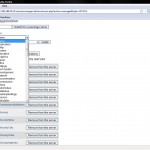
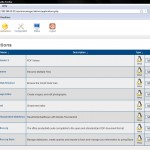
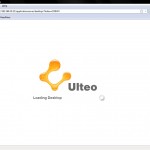
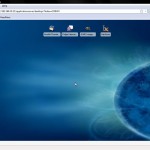
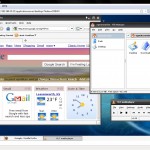
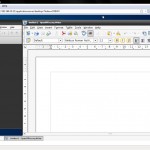
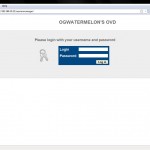
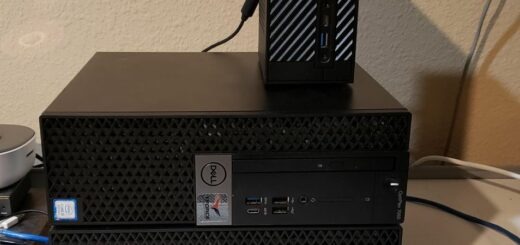


straight to the point.. concise and informative..Nice one..
This post has really caused me to think about several new issues in our world. Thanks for causing others to think.
Wow, this blog is definately getting bookmarked.
Thank you for the positive review !
Just one correction: you will still need Windows TS for Windows applications in the future, except if you run them in some application virtualization solution that we can leverage as well.